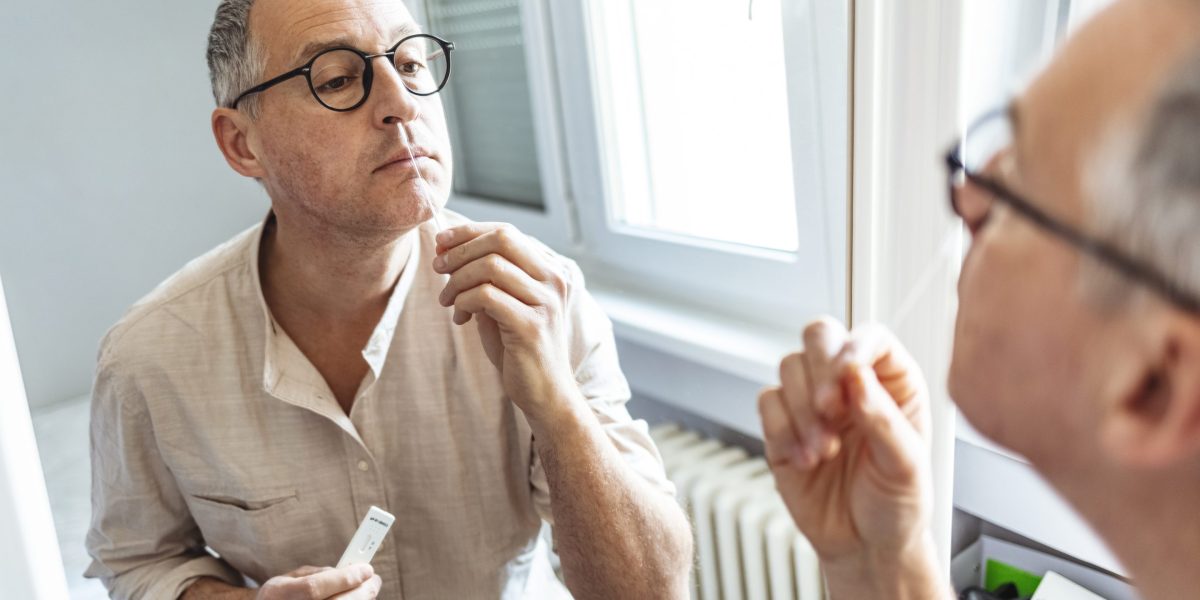The summer wave of COVID infections may be ebbing—nationwide weekly test positivity has been decreasing since the week ended Aug. 10—but with autumn now here and the winter holidays approaching, free COVID tests will once again become available in the coming days.
Each U.S. household is eligible to receive four rapid, at-home tests via COVIDtests.gov. As of midday Sept. 24, a notice on the website still said it would reopen in “late September.” When it does, simply enter your name and home (or residential P.O. Box) address, and the U.S. Postal Service will ship the tests to you at no cost.
The unspecified volume of tests are available on a first-come, first-served basis. The website said both standard—presumably nasal swab—and “more accessible” tests would be available, but didn’t elaborate on which brands or types of tests would be on offer.
The federal government has distributed more than 900 million COVID tests through the program since the start of the coronavirus pandemic, according to the Administration for Strategic Preparedness and Response (ASPR), part of the Department of Health and Human Services. When the agency announced last month that tests would be available this fall, the program had been suspended since March.
Last year, COVIDtests.gov reopened on Sept. 25, days after the Biden administration had announced a $600 million investment in a dozen domestic test manufacturers. They were expected to produce a combined 200 million over-the-counter test kits.
Check the expiration dates on your free COVID tests
Don’t be alarmed if the packaging on your tests indicates they’re past their prime. The Food and Drug Administration (FDA) maintains a searchable database of nearly 50 different at-home tests whose expiration dates have been extended.
If even your tests’ extended expiration dates have passed, though, the FDA advises against using them.
“COVID-19 tests and the parts they are made of may degrade, or break down, over time,” the FDA website says. “Because of this, expired test kits could give inaccurate or invalid test results.”
The ASPR assures Americans this latest batch of free tests will be good at least through the end of the year.
Do COVID tests detect the new XEC variant?
Yes and no. Over-the-counter tests can detect the presence of the coronavirus in your body, regardless of which current variant it stems from, according to the ASPR. But an at-home test won’t tell you which variant of SARS-CoV-2, the virus that causes COVID, you may have.
How much do over-the-counter COVID tests cost?
It may take a few weeks for your government-issued COVID tests to arrive, so you’ll have to look elsewhere if you need one immediately.
The good news is, test kits are widely available at retail pharmacies, big-box stores, and online retailers. Medicare covers the costs of tests purchased over the counter, as do some private insurers. If you don’t have health insurance and are symptomatic or have been exposed to someone with COVID, you may visit a federal Increasing Community Access to Testing location for free.
Out-of-pocket costs vary depending on the brand and number of tests per package. On the CVS website, for example, a single FlowFlex test costs $9.99, while a four-pack of BinaxNOW tests costs $34.99. Amazon sells a five-pack of iHealth tests for $44.95 and a pair of Boson tests for $9.98, among others.
For more on COVID-19:
Subscribe to Well Adjusted, our newsletter full of simple strategies to work smarter and live better, from the Fortune Well team. Sign up for free today.

